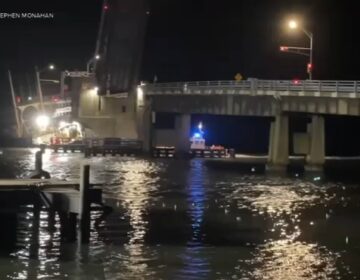Balancing regional planning and home rule – page 6
Mike Cerra of the New Jersey League of Municipalities isn’t too wild about that idea. “I think we’d rather see planning, and good planning, as emanating from the bottoms up, coming from the towns, pushing its way to the counties, up into the state,” he said. “Ultimately it’s the people who live in these communities, who make it their home, who’ve invested in these communities, who should have the final say.” Bay Head Mayor William Curtis said he’s not necessarily opposed to the formation of some sort of commission, but he agrees that successful planning needs to start on the local level, with mayors who understand the needs and desires of their residents and their towns.
The notion of forming a New Jersey Coastal Commission was first introduced by Gov. Thomas Kean back in the ’80s, but it never gained much traction. In the aftermath of Sandy, Assemblyman Peter Barnes, D-Middlesex, has reintroduced the idea, but it’s opposed by the governor and many coastal lawmakers who not only raise home rule concerns but also fear adding a layer of unnecessary bureaucracy.
Breaking camp
Jack Purvis stands at the edge of a vacant, 3-acre lot along Rt. 35 in Brick, N.J. He’s the head of the New Jersey Society of Architects, and he’s brought along his friend fellow architect Paul Barlo, who collaborated with him on a recent project. They’re looking out on the wreckage that remains of Camp Osborn, a neighborhood of 1920s-era bungalows that experienced severe flooding and a fire during Sandy, with close to 100 bungalows burning to the ground in this section alone. “It’s a beautiful spot. You’ve got the bay on one side, the ocean on the other. It’s a nice place to live, nice place to have your kids in the summer,” says Purvis, but glancing at the field with scraps of plywood, twisted and rusty metal and charred pieces of what were once people’s homes, it takes a bit of imagination to understand what he’s talking about.
He and Barlo have come up with a new plan for this land, supported by a majority of the former residents and the town. It would entail building a high-density, 90-unit condominium complex, elevated on a platform to withstand future flooding and raised a full 6 feet above FEMA’s minimum height requirements. Barlo predicts that five or 10 years from now, their type of design is what most development along the Jersey Shore will look like.
“The reality is that the new construction is the wave of the future, and the old way that we did things … we’re not going to see that anymore,” he said. “It’s idealistic to say that it should be pristine, and we shouldn’t be building on a barrier island, but I think we’re beyond that point. We just have to be careful that Mother Nature needs to come in and go out, and people need to live the best way they can, dealing with the forces of nature.”
But rather than making preparations for future storms, some shore residents are simply holding out hope that Mother Nature won’t return, at least not in such force or anytime soon. Drive just a few miles south on the island, to the Ocean Beach section of Toms River, and you’ll find hundreds of tiny cottages in a development fairly similar to what Camp Osborn was like before the storm. Fortunately for the residents, Sandy’s damage was much more modest here. A few of them have now raised their bungalows up on piers, but many of the residents paid off their mortgages long ago and don’t have flood insurance, so there are no requirements to elevate their homes. Instead, they’re simply staying put and hoping for the best.
Susan Fennes and her husband have owned a house here for 22 years. She said she thinks Sandy was a one-time event, and she said it hasn’t changed her view of living at the shore. In fact, she said she’s been going there for so long, that she doesn’t ever want to leave. “My husband’s more of a pessimist. I’m an optimist. And he says, ‘Yeah, maybe in 40 years, nothing will be here,'” she said. “And it could be true. But, you know, there’s all this hype. You don’t know who to believe. I know they say ‘global warming,’ and the storms are going to be worse,” she continued, but, “What do they know? Do they really know that? No. So we’re taking our chances.”
__________________________________________________
Scott Gurian is the Sandy recovery writer for NJ Spotlight.
WHYY is your source for fact-based, in-depth journalism and information. As a nonprofit organization, we rely on financial support from readers like you. Please give today.




